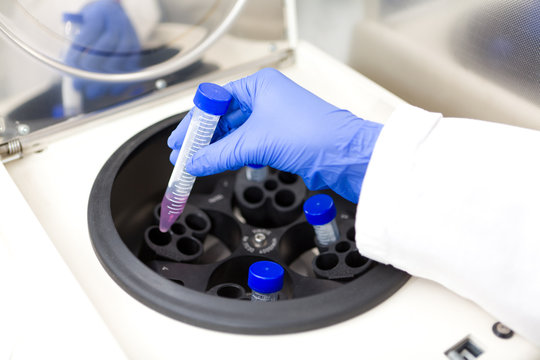Centrifugation is a pivotal technique used in laboratories worldwide to separate mixtures based on the density of their components. By applying centrifugal force, this method enables the isolation of specific particles or molecules from a liquid sample. Below, we delve into the details of centrifugation, exploring its principles, types, and wide-ranging applications.
What is Centrifugation?
Centrifugation is a process that leverages centrifugal force to separate components in a mixture. It works by spinning the mixture at high speeds, causing particles to sediment at different rates based on their size, shape, and density. This method is indispensable in research, medical diagnostics, and industrial processes.

Principles of Centrifugation
Centrifugation operates on the principle of sedimentation, where particles in suspension settle due to gravitational force. By increasing this force through rapid rotation, the sedimentation process is accelerated. The following key factors influence the efficiency of centrifugation:
- Centrifugal Force: Measured in relative centrifugal force (RCF), this is the force exerted on particles to drive their movement.
- Density Difference: Greater differences in density between the particles and the medium enhance separation.
- Viscosity: The resistance of the liquid medium affects the rate of particle movement.
- Rotor Type and Speed: Different rotors and rotational speeds optimize the separation process for specific applications.
Types of Centrifugation
There are several types of centrifugation, each tailored to different purposes and sample types.
Differential Centrifugation
This is the simplest form, often used to separate cellular components. Samples are spun at successively higher speeds, allowing particles to sediment based on size and density
Density Gradient Centrifugation
This method uses a density gradient medium (e.g., sucrose or cesium chloride) to separate particles. There are two subtypes:
Zonal Centrifugation: Particles are layered at the top of the gradient and migrate based on size and density.
Isopycnic Centrifugation: Particles settle at the point where their density matches that of the gradient.
Ultracentrifugation
High-speed centrifugation used for molecules like DNA, RNA, and proteins. Ultracentrifuges operate at speeds exceeding 100,000 rpm, generating massive centrifugal forces.
Analytical Centrifugation
Used to study the sedimentation properties of macromolecules and particles, providing valuable insights into their size, shape, and interactions.
Key Components of a Centrifuge
Understanding the core components of a centrifuge helps optimize its use:
- Rotor: The spinning part that holds the samples. Common types include fixed-angle and swinging-bucket rotors.
- Speed Controls: Allows adjustment of rotation speed to match experimental requirements.
- Refrigeration System: Maintains sample integrity by regulating temperature.
- Safety Features: Lid locks, imbalance detection, and braking systems ensure user safety.
Applications of Centrifugation
Centrifugation is a cornerstone in multiple fields, offering unparalleled utility in:
Medical Diagnostics
- Blood Separation: Centrifugation separates plasma, serum, and blood cells for diagnostic purposes.
- Pathogen Detection: Isolates bacteria and viruses for further analysis.
Molecular Biology
- DNA and RNA Isolation: Essential for genetic studies and biotechnological applications.
- Protein Purification: Facilitates separation of proteins from cell lysates.
Industrial Applications
- Food Industry: Used for cream separation in dairy and clarifying juices.
- Pharmaceuticals: Purification of vaccines, antibiotics, and enzymes.
Environmental Science
- Water Testing: Removes suspended particles to evaluate water quality.
- Oil Industry: Separates oil and water mixtures for crude oil refinement.
Advantages of Centrifugation
Centrifugation offers several benefits that make it indispensable:
- Efficiency: Speeds up the separation process.
- Precision: Achieves highly accurate separation based on physical properties.
- Versatility: Adaptable to various sample types and scales.
Best Practices for Centrifugation
- To achieve optimal results, consider these practices:
- Balance the Rotor: Uneven loading can damage the centrifuge or affect results.
- Set Appropriate Speeds: Match the centrifugal force to the sample type.
- Use Correct Tubes: Select tubes compatible with your rotor and sample.
- Monitor Temperature: Keep samples stable with refrigerated centrifuges.
Conclusion
Centrifugation remains a cornerstone of modern science, offering precision and versatility in countless applications. From separating blood components to refining industrial products, its impact is undeniable. With advancements in technology, the future of centrifugation looks promising, paving the way for even greater innovations.
FAQs
1. What is the main principle of centrifugation?
It relies on centrifugal force to separate particles based on size, shape, and density.
2. How does ultracentrifugation differ from other types?
Ultracentrifugation operates at much higher speeds, enabling the separation of smaller molecules like proteins and nucleic acids.
3. What safety precautions should be taken during centrifugation?
Always balance the rotor, use compatible tubes, and adhere to manufacturer guidelines to prevent accidents.
4. Why is refrigeration important in some centrifuges?
Refrigeration protects heat-sensitive samples, ensuring their integrity during high-speed spins.
5. Can centrifugation be used for non-laboratory purposes?
Yes, it is widely used in industries like food processing, pharmaceuticals, and environmental testing.

